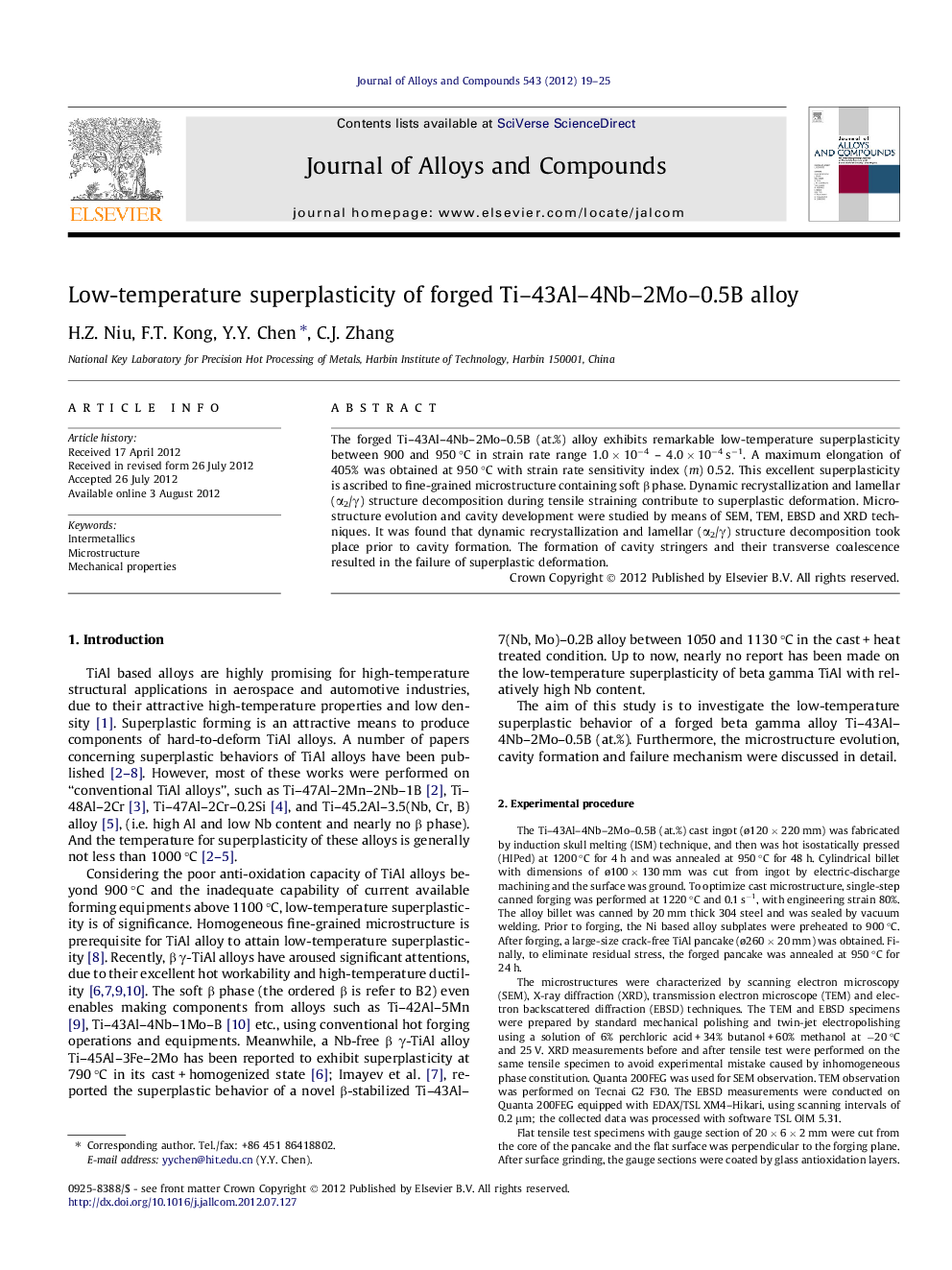| Article ID | Journal | Published Year | Pages | File Type |
|---|---|---|---|---|
| 1615550 | Journal of Alloys and Compounds | 2012 | 7 Pages |
The forged Ti–43Al–4Nb–2Mo–0.5B (at.%) alloy exhibits remarkable low-temperature superplasticity between 900 and 950 °C in strain rate range 1.0 × 10−4 – 4.0 × 10−4 s−1. A maximum elongation of 405% was obtained at 950 °C with strain rate sensitivity index (m) 0.52. This excellent superplasticity is ascribed to fine-grained microstructure containing soft β phase. Dynamic recrystallization and lamellar (α2/γ) structure decomposition during tensile straining contribute to superplastic deformation. Microstructure evolution and cavity development were studied by means of SEM, TEM, EBSD and XRD techniques. It was found that dynamic recrystallization and lamellar (α2/γ) structure decomposition took place prior to cavity formation. The formation of cavity stringers and their transverse coalescence resulted in the failure of superplastic deformation.
► This forged TiAl alloy exhibits low-temperature superplasticity. ► Fine-grained microstructure with soft β phase is favorable to superplasticity. ► DRX and decomposition of lamellar structure take place during tensile straining. ► Cavity stringers occur and their transverse coalescence leads to failure.
